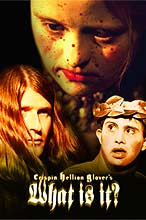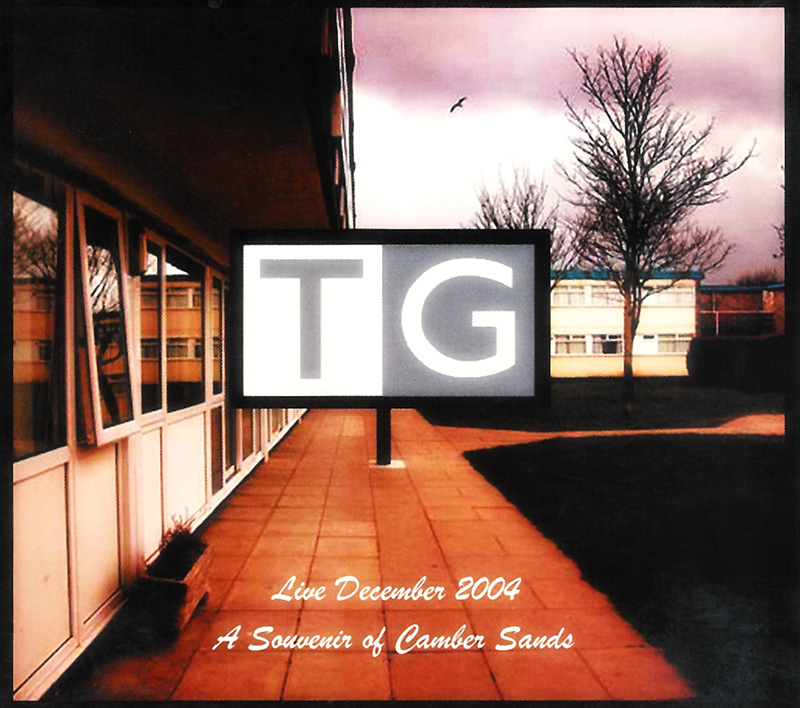
The movie “What is it?” it and this is a big swing could be described briefly as an absurdist look at control, reality, good, evil, normal, and abnormal. My take on this surreal jaunt into dislocation is that this may very well be a synopsis of how Crispin Glover might see the media, its role, and its effect. You should stop reading here if you are going to see this film!
Simply put, the movie looks at layers of control, of who is really at the top and what is the ultimate outcome on those below. This begins with the “pearl” in the clamshell as our true earthly power; he is the majority shareholder of the corporation. Naked and twisted and without visible authority, others are acting on his behalf. Those others are weak, ineffectual monkey mask-wearing slaves crawling in and out of their holes, making offerings to the corporate benefactor; these are the producers, studio chiefs, and CEO. Next in line is the Director, played by Crispin Glover. The fur-clad dude who, when required, will bow down to the corporate chieftain but more typically surrounds himself with yes-men and women waiting for him to take an interest.
The succession of power continues to flow downstream as our Director, from afar, seems to control the actions of our main characters, an ensemble of Down Syndrome people Crispin has brought onto the silver screen. With the same voyeuristic intensity and curiosity, we stare at the details, guiltily we can’t help but study their disfigurement, and we hang on to their utterances, which, for the most part, are incoherent. The analogy here is I think Crispin is showing us our idols, our Hollywood stars, himself.
Finally, at the bottom of this ladder are the snails. Those things move too slowly to escape even the slow reactions of these Down Syndrome characters who have ultimate control over and exercise that control over the snails through acts of childish, innocent cruelty. Not really aware of how cruel but damaging to the point of killing that thing which they hold close momentarily.
The message ends up being that the twisted corporate grotesque figure who emerges from luxury plays back a repeating message of ignorance, which he himself helped create but is now forced to repeat again and again. The Director pushes his actors to be the spectacle so that the audience is under its grip while, through their own innocence, poisoning and thus killing those who have no voice below them – the masses, the spineless audience.
Thus, the film is a mirror of corporate control pushing an agenda of stupidity via its studio, who use its Directors to create the spectacle where we are forced to watch these celebrities even as they unwittingly destroy us (our intellect) with their banality and apparent innocence.
As for some of the Nazi symbolism, my take here is that symbology used for control we construe as good or bad, and as the swastika is typically a negative, Crispin short circuits us by throwing a symbol we immediately identify as evil. I believe the intent here is to make the audience think about how they see these symbols. The swastika behind the image of Shirley Temple is a perfect juxtaposition where we can annoy ourselves with the merging of the ugly and the cute, but what he really shows us is that if we replace the swastika with a dollar sign, then the image and symbology is acceptable. While Hollywood doesn’t overtly use the dollar sign, it effectively does so in its use of designer clothing, expensive cars, well-furnished homes, and the gratuitous display of a wealthy lifestyle that smacks of dollars. Hence, our image of wholesomeness isn’t questioned when we look at the brute force induction of our senses into consumerism, but in the dark world of Crispin’s view, you see the naked aggressiveness of symbolic manipulation for what it is – ugly manipulation meant to make you squirm.
The Johnny Rebel song is another bone in the film that rattled a few cages. For me, this is a brilliant use of song to demonstrate institutionalized hatred. Crispin has the guts or luck to have stumbled upon using this to tell his audience that yes, we use stereotypes, ones that are meant to infuriate, but that we can package it into parody or use it in such a way that you won’t understand precisely what and why it was used, but there is this undercurrent of hatred that can and is used for the sake of manipulation, but do you really care enough to speak up?
The role of god is played by Shirley Temple. God floats in the form of a doll on clouds aloft to calm the artist as conflicts with the desires of the corporate vision interfere with the Director. If, as you watch this film, you replace the images on the chair of Shirley Temple and swastikas with that of Jesus and dollar signs, you may better understand the context of the idol, symbol, meaning, emotional suspense, and intellectual manipulation, both here for shock value and as used subliminally by mainstream media.
The man in blackface is the ego of our audience. Vulgar in his appearance not only due to the blackface, which is sure to offend, but because he wants to look like everyone else, and if urbanized invertebrate is what is ‘in’ at the moment, so shall he become it. He is reducing himself to be as insignificant as the snail – using makeup, injections, desire, and possibly other means to become the idealized version of what he thinks he should be instead of coming to be and knowing one’s real or true self.
The movie does not come over this cleanly; it is rough, raw, in a sense violent, pornographic, and quite disturbing, I’m sure, to many people who may stomach its entire 90 minutes. Oh, and this is part one of a trilogy.
I liked the movie; it is engaging, and it may even possess elements of genius. This first impression and attempt at interpretation might very well be way off, no matter though, as, at a minimum, I believe Crispin presents this film for the sake of his audience to ask the question represented by its title, “What is it?”. No doubt, this film is a genuine peek into the imagination of a thinking artist who definitely has more to say than the scripted silliness that has been piped through him in big studio roles that are less than what an artist may earnestly want to portray.
Thanks to the management of the Loft Cinema in Tucson for taking this on, and thanks to Crispin Glover for taking the time to visit Arizona and show us his new film. Good luck watching it; better luck figuring out what it is.
View the trailer or visit Crispin Glover’s website at www.crispinglover.com
Above image Copyright Crispin Glover

